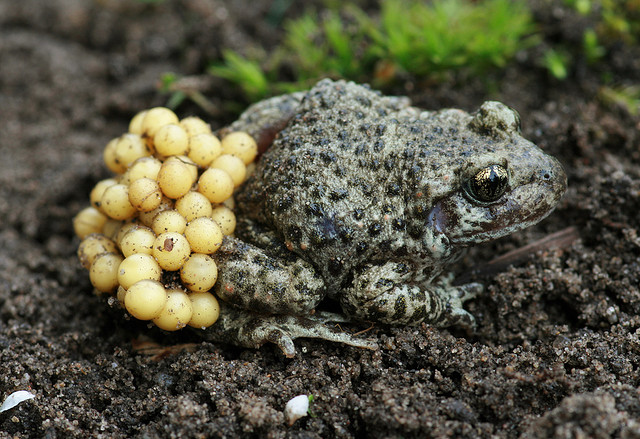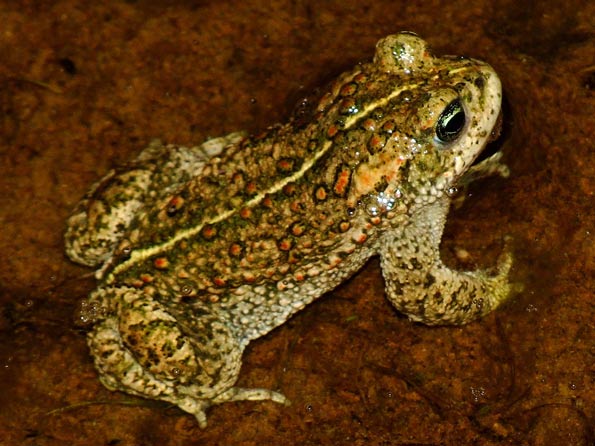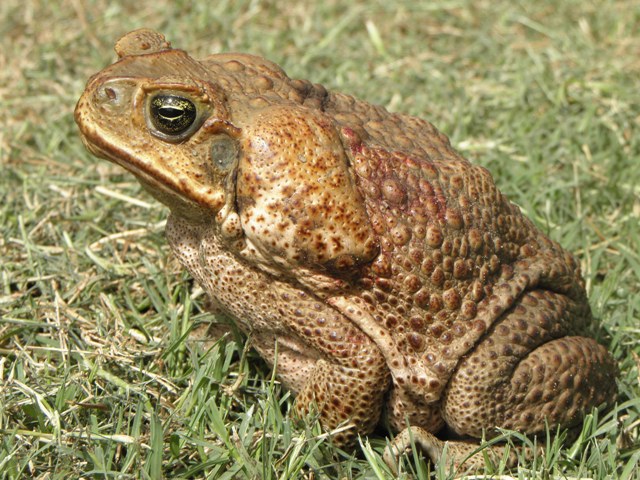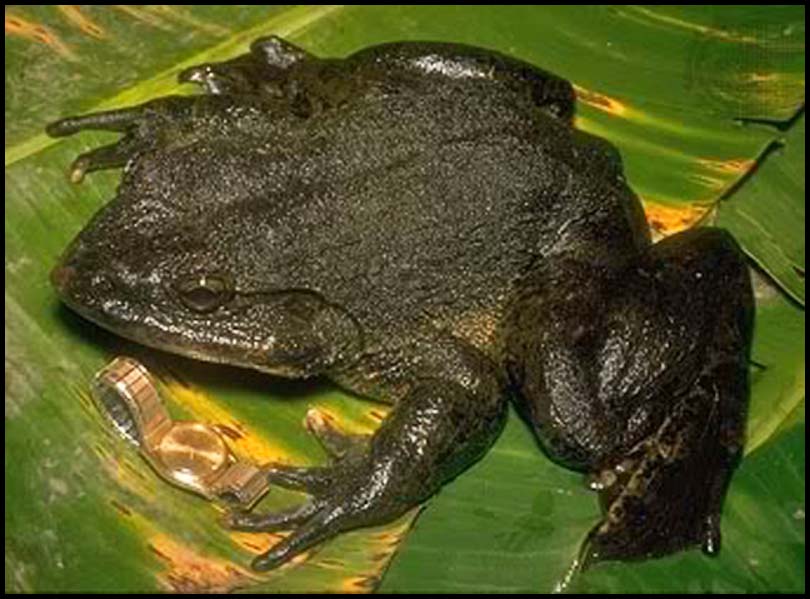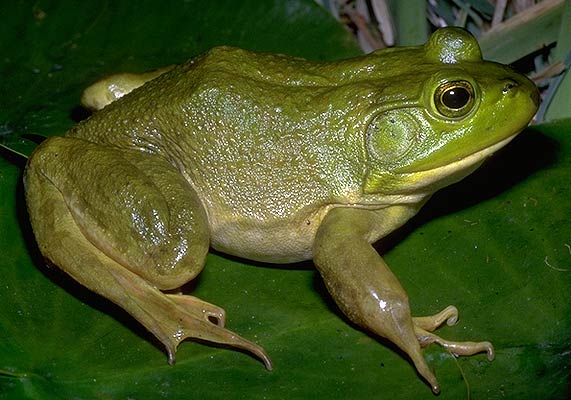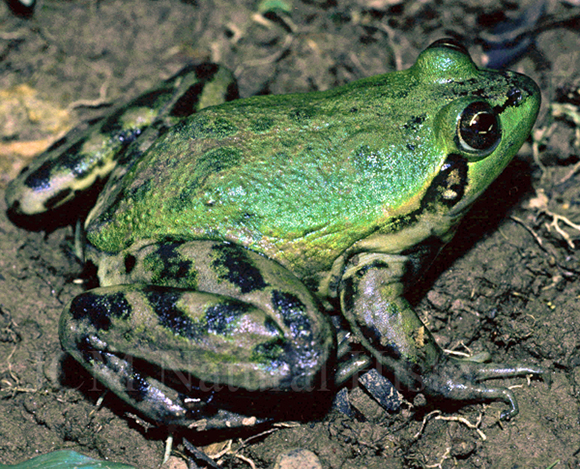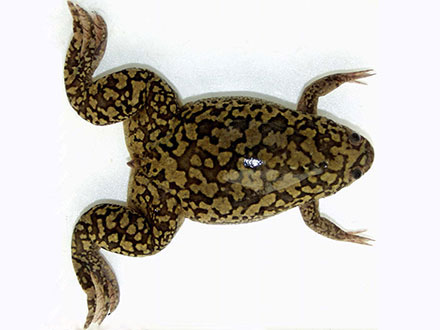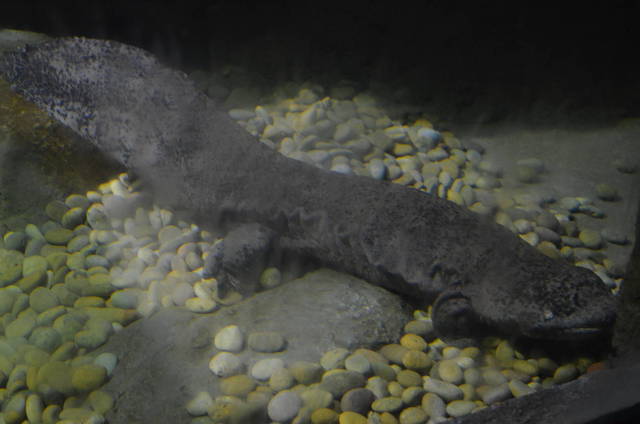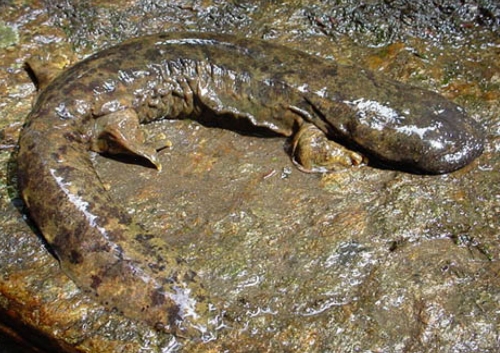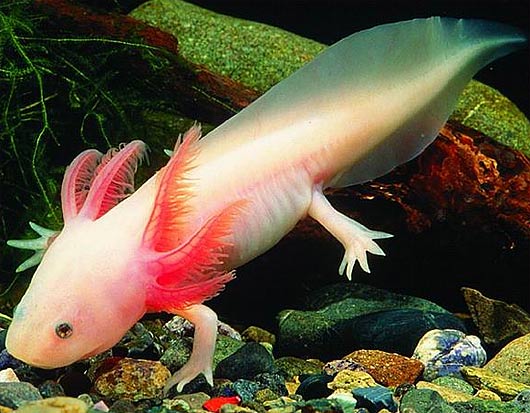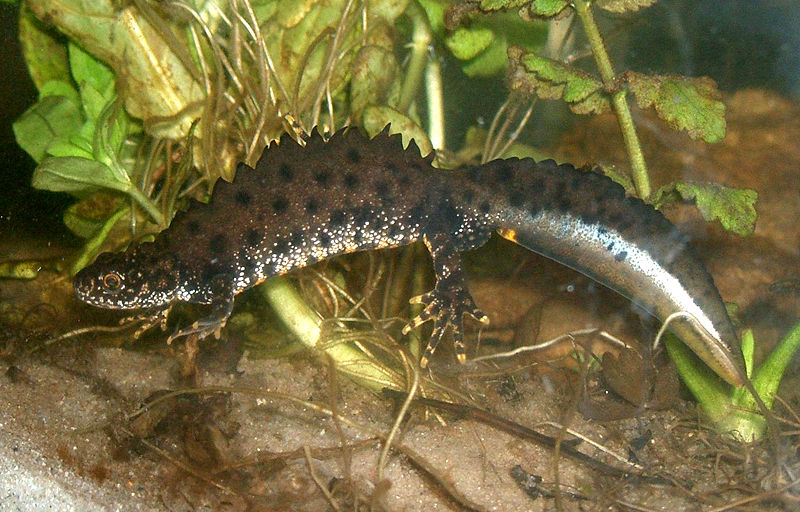Difference between revisions of "Physical World/Amphibians"
(added images) |
(added images) |
||
| Line 118: | Line 118: | ||
|- | |- | ||
| + | |[[File:Great crested newt.jpg|none|thumb]] | ||
| | | | ||
| − | + | ||
'''Great crested newt''' | '''Great crested newt''' | ||
| + | |||
''Triturus cristatus'' | ''Triturus cristatus'' | ||
| + | |||
Also known as northern crested newt | Also known as northern crested newt | ||
| − | |||
Males can be distinguished from females by the presence of a jagged crest during the breeding season | Males can be distinguished from females by the presence of a jagged crest during the breeding season | ||
|} | |} | ||
Latest revision as of 14:47, 1 July 2021
| Midwife toad
genus Alytes The males carry a string of fertilised eggs on their back, hence the name "midwife" The back of the midwife toad is covered with small warts. These warts give off a strong smelling poison when the toad is attacked | |
| Natterjack toad
Bufo calamita
Natterjacks have a very loud and distinctive mating call | |
| Cane toad
Rhinella marina
| |
| Goliath frog
Conraua goliath
The one in the picture has stolen a watch! | |
| American bullfrog
Rana catesbeiana
Native to southern and eastern parts of the United States and Canada | |
| Paradoxical frog
Pseudis paradoxa
| |
| Xenopus
genus Xenopus
Studied as model organisms for developmental biology, cell biology, toxicology, neuroscience and for modelling human disease and birth defects | |
| Chinese giant salamander
Andrias davidianus
A living fossil which is classified as critically endangered | |
| Hellbender
Cryptobranchus alleganiensis
| |
| Axolotl
Ambystoma mexicanum
Axolotls reach adulthood without undergoing metamorphosis. Instead of developing lungs and taking to land, the adults remain aquatic and gilled
| |
|
Great crested newt
Triturus cristatus
Males can be distinguished from females by the presence of a jagged crest during the breeding season |
